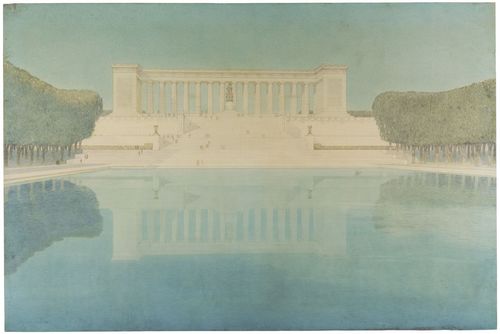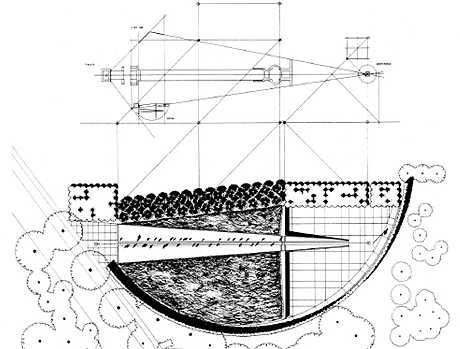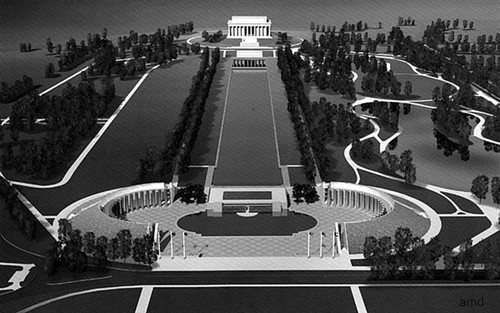The winner of a design competition will build the WWI Memorial. Here’s what that means.
Today, the sponsor of the World War I Memorial will choose the winner of its design competition, meaning we’ll get a sense for what the memorial will look like in the end. Whether or not design competitions succeed depends heavily the work that goes into planning them.
The Memorial will go into Pershing Park, a secluded 1970s plaza at 14th and Pennsylvania Avenue, near the White House. Congress chose that location because it already has a memorial to General John Pershing, who led US troops in World War I.
The memorial sponsors sent out an open call for ideas last year. The winner will come from of one of the five finalists named in November 2015. After getting feedback, these five designers have revised their projects and submitted them to a jury of architects, historians, and politicians. On Tuesday (after a snow delay), the memorial commission will vote on the jury’s choice.
Here’s how design competitions work
Design competitions aren’t part of the process for most buildings, but governments and other big institutions like them for major projects. They give those sponsoring the competition (and ultimately responsible for the building) a few options to choose from rather than picking a designer based on prior work and a business plan.
Every competition begins the same: with a design brief, a document that outlines what the sponsor wants. Then, they split into three basic formats:
- The most celebrated kind is an open competition where pretty much anyone can submit a design. The Vietnam Veterans Memorial is the best example, and the World War I Memorial is using this model.
- An invited competition, where a client looks at only a hand-picked few designers is the second type. The Lincoln Memorial is one outcome of this format.
- A slight variation on that is a qualified competition, where anyone can submit qualifications, out of whom a few get asked for designs. The Eisenhower Memorial followed this model, which is common for federal projects.
Most open competitions, including the World War I Memorial, have two stages. In the first, anyone can present their design in a very limited format. For the Pentagon 9/11 Memorial, the jury winnowed 1,200 entries to six finalist from a single drawing. Qualified competitions make the same selection by looking at past work or credentials.

Henry Bacon beat out one rival for the Lincoln Memorial, John Russell Pope. This design by Pope is closer to what the McMillan Commission envisioned. Image from the Library of Congress.
In the second round, open, qualified, and select competitions work the same. Each team works out a detailed conceptual design. In better competitions, the competitors work with the sponsor, review agencies, and constituents to refine the design. Then, at the end of this, a jury composed of stakeholders or designers picks a winner.
Well-run design competitions can have big upsides
Malcolm Reading, a design competition designer, who ran recent competitions for Gallaudet University, and the Guggenheim Helsinki, put it this way in an interview: “I would say that competitions are, in general, more meritocratic. The process itself, run properly, allows talent to rise to the top and a level of public debate and engagement that would not be possible with a direct commission.”
The best example of this process working is the tightly controlled competition that brought us the Vietnam Veterans Memorial.
Take a look at this booklet promoting the memorial. It outlines so much of what makes that design iconic: an apolitical remembrance of the dead, a list of names, and a site of personal reflection. That’s interesting, because this is the design brief, written months before Maya Lin began her class assignment that eventually become an American icon.
Detail of Maya Lin’s first-stage entry, showing visitors’ experience at the center of the memorial and exiting. Image from the Library of Congress. In the winning scheme for the the Korean War Veterans Memorial, visitors would have “walked home” between statues of troops. (Image from Lucas Architects) Some WWI competition entrants have changed significantly already. Here’s the first stage entry for “Plaza to the Forgotten War” In the second-stage mid-review version, design now preserves more of the existing park. (Both images from Johnsen Schmaling Architects. 





